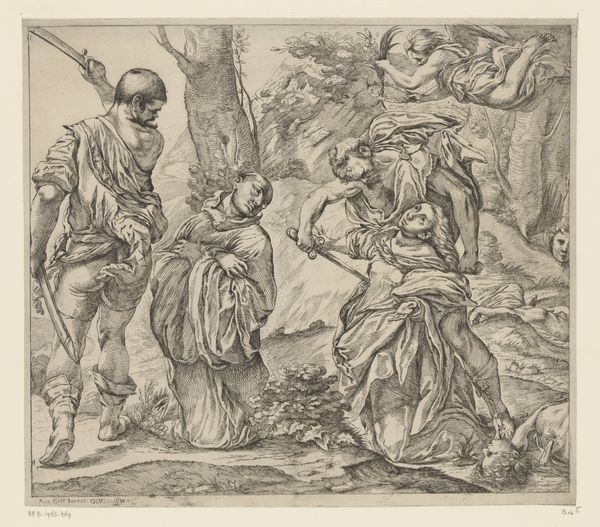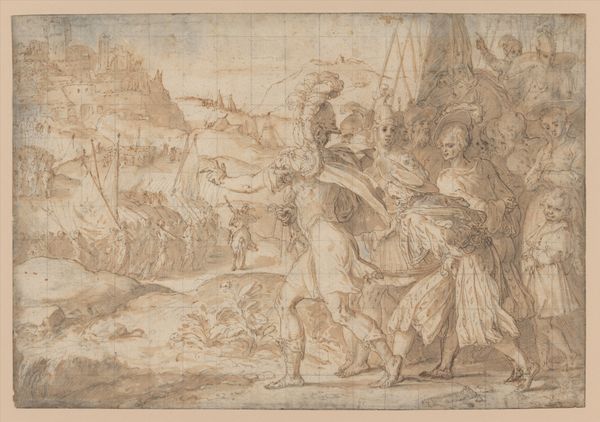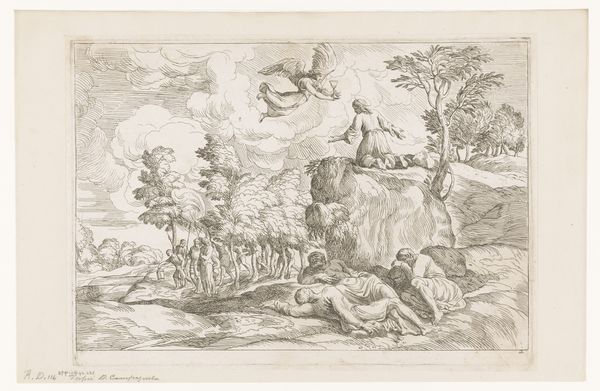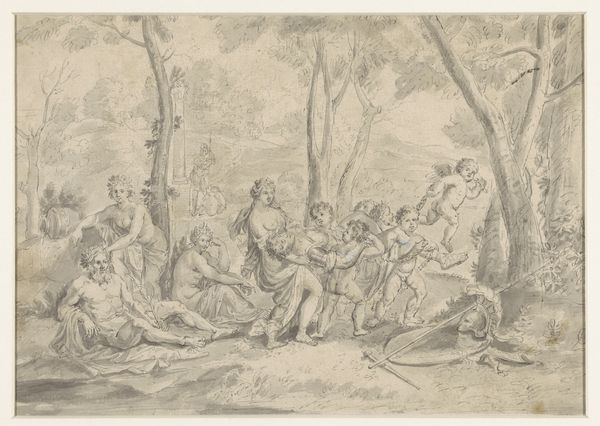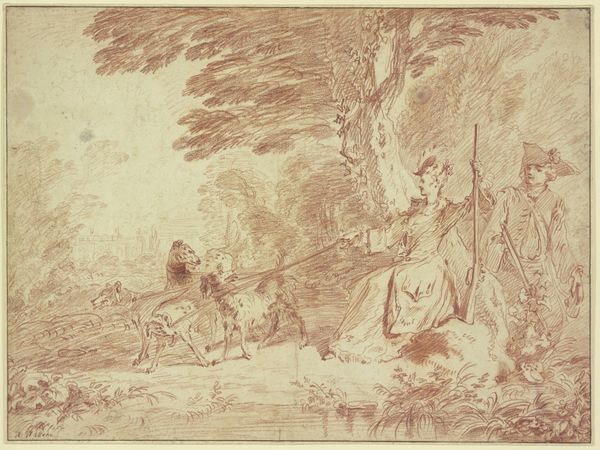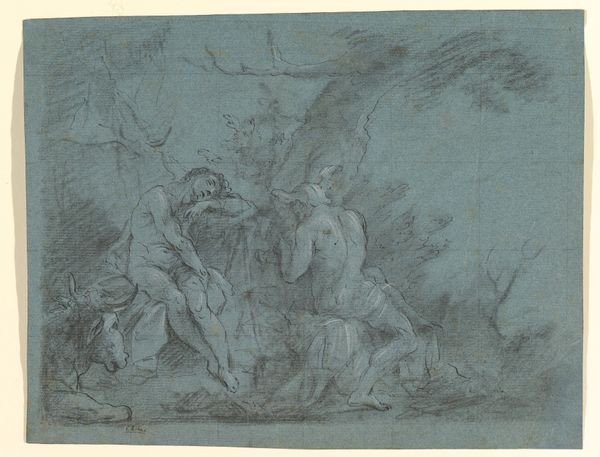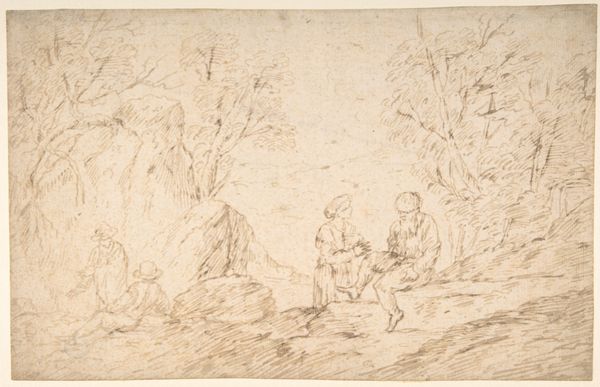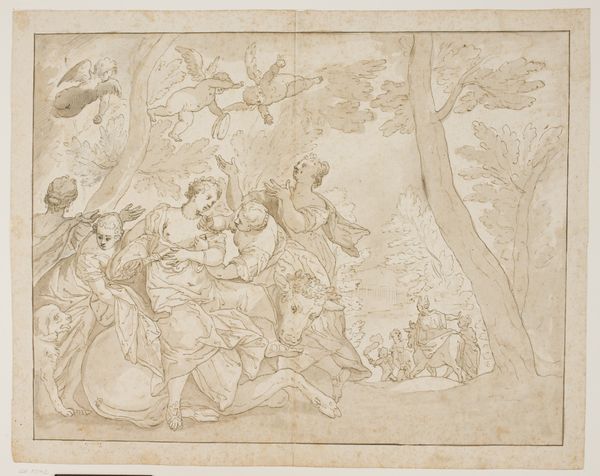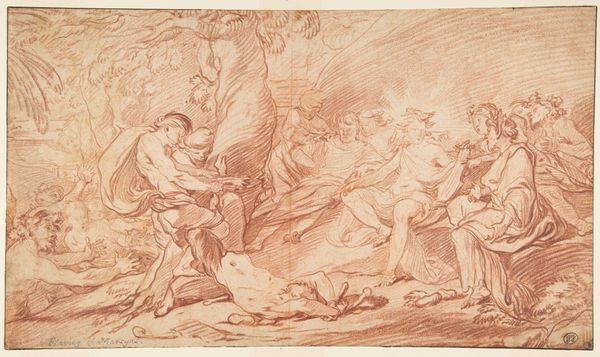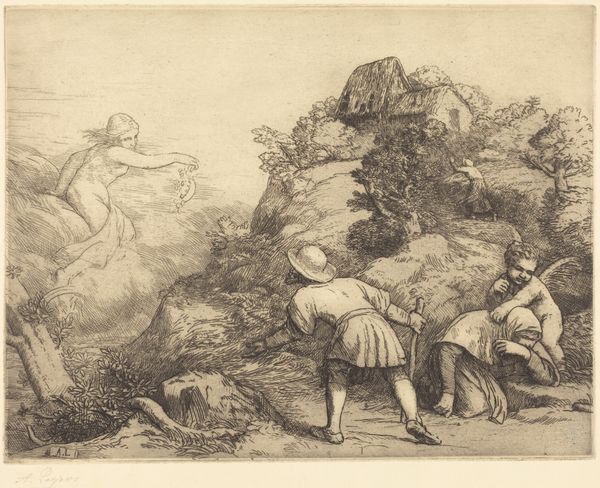
drawing, paper, pencil
#
drawing
#
landscape
#
figuration
#
paper
#
11_renaissance
#
pencil
#
history-painting
#
academic-art
Dimensions: overall: 44.5 x 60.2 cm (17 1/2 x 23 11/16 in.)
Copyright: National Gallery of Art: CC0 1.0
Curator: This drawing, titled "Circe and Ulysses," presents a classical scene rendered in pencil on paper. Editor: The wispy quality immediately strikes me. It feels almost like a fleeting thought, barely materialized. You can almost see the pencil strokes layering, the process right there on the surface. Curator: Exactly. Although created with simple materials, consider how it taps into the grand tradition of history painting and figuration so central to Renaissance academic art. The image depicts a pivotal moment from Homer’s "Odyssey". Ulysses, or Odysseus, confronts the sorceress Circe. Editor: And she’s not happy! Her languid pose speaks to a comfortable power, yet there’s an underlying tension. It’s fascinating how much emotional weight is carried by such delicate linework. You really sense the making through those faint lines on the page. It’s a dialogue between the artist and the story, as well as within the unfolding scene. Curator: Circe, notorious for transforming men into beasts, is here being challenged by Ulysses, protected by Hermes' magic. Notice the transformed figure huddled at the left, a potent symbol of Circe’s power and a warning of unchecked authority. How interesting it is to see the narrative, taken from classic poetry, translated to the paper like this through pencil and skill. Editor: That transformation is really powerful. It speaks to a fear of losing one's humanity, a concern relevant across historical periods. Also consider the availability of paper at the time of the Renaissance, versus a more limited, and thus possibly more valued surface, like canvas. How would the artwork's message change based on these types of constraints? Curator: A fair point about material value and accessibility informing not only availability but subject. This type of illustration demonstrates the sway that canonical historical painting holds over Renaissance themes. How even accessible material, such as paper, becomes enmeshed with elite ideals. Editor: It all boils down to labor, the process of bringing these figures to life with such rudimentary tools. From that transformation to high status. The physical act of the artist mediates history itself through a filter of handwork, pencil, and paper. Curator: Indeed, both visible and material legacies of artistic expression and how even in simple tools one sees reflections of grand artistic projects. Editor: Beautifully put, a meeting of Homer's grand narrative with the quiet labor of artistic practice, there to be considered beyond only its theme, and rather in terms of the tools with which it was made.
Comments
No comments
Be the first to comment and join the conversation on the ultimate creative platform.


